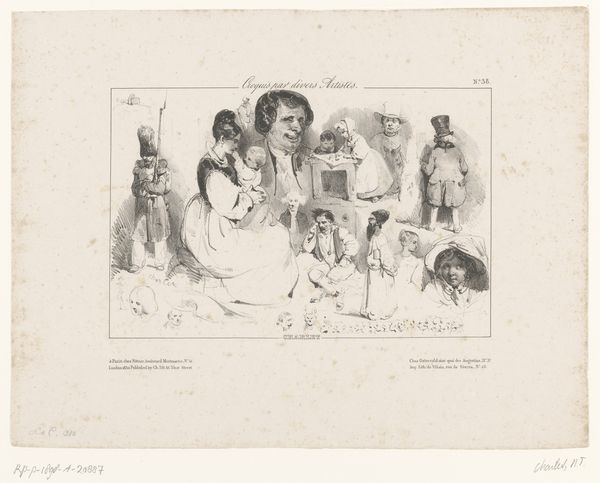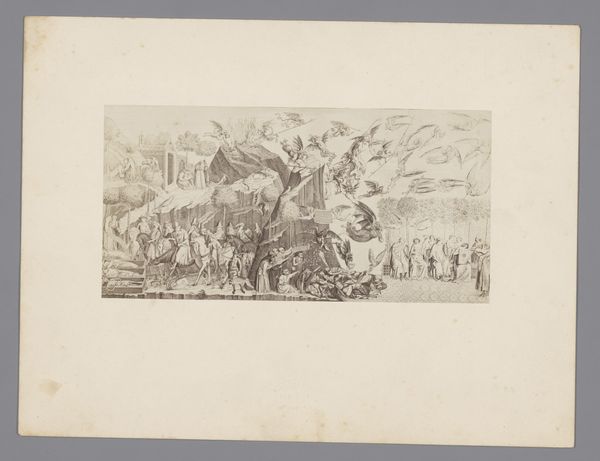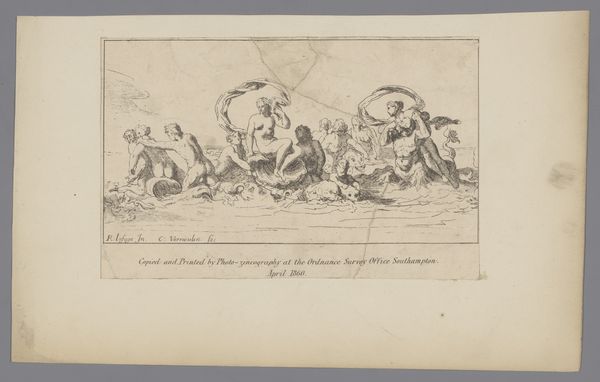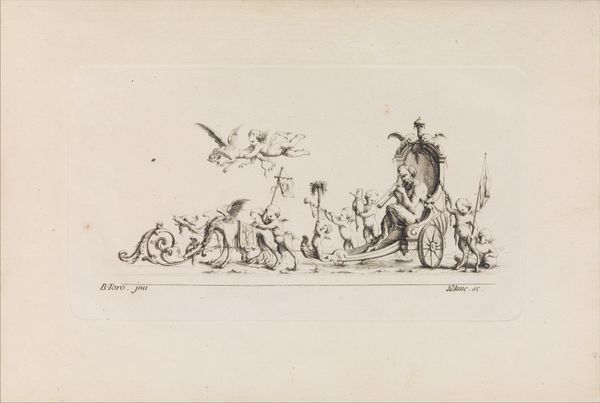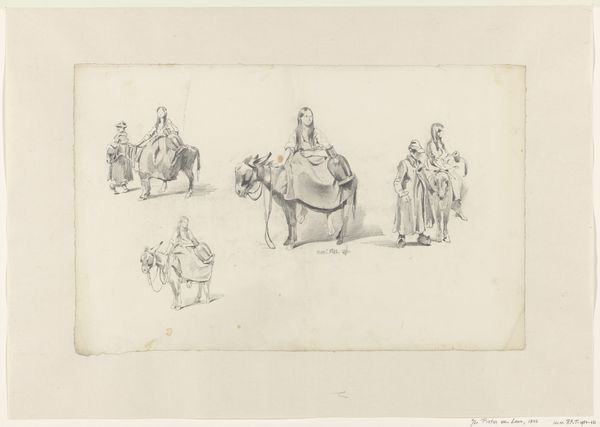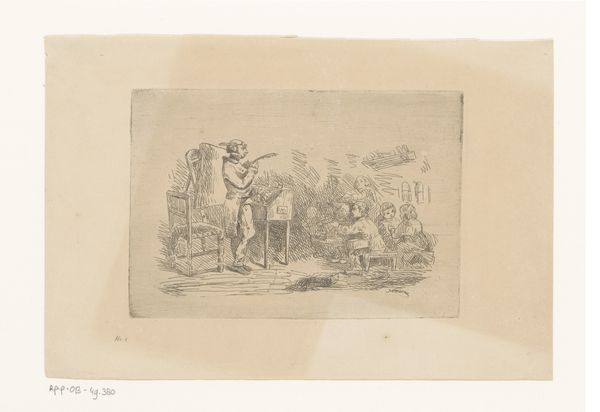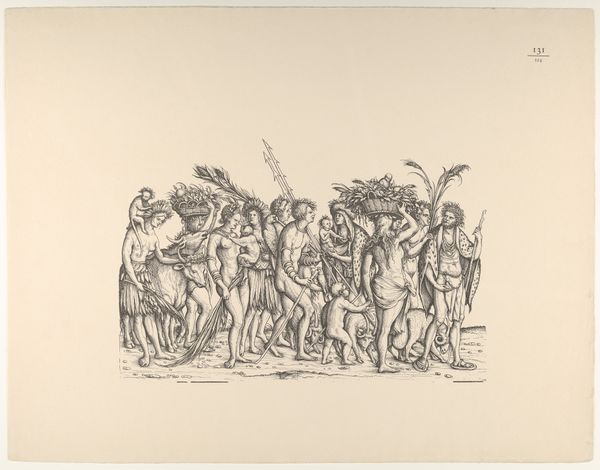
Utrechtse schutter en krijgsman in wapenrusting uit de vijftiende en zestiende eeuw 1857
0:00
0:00
drawing, print, ink, engraving
#
portrait
#
drawing
# print
#
figuration
#
form
#
ink
#
costume
#
line
#
history-painting
#
academic-art
#
engraving
Dimensions: height 149 mm, width 236 mm
Copyright: Rijks Museum: Open Domain
Curator: Let’s take a look at "Utrechtse schutter en krijgsman in wapenrusting uit de vijftiende en zestiende eeuw," which translates to "Utrecht shooter and warrior in armor from the fifteenth and sixteenth century". This print, an engraving to be precise, was created by an anonymous artist in 1857 and is now housed here at the Rijksmuseum. Editor: The precision in this image! It immediately speaks of meticulous craftsmanship. Look at the detail etched onto each plate of the armor and the ornate saddle—the material is so skillfully rendered one can almost feel its weight and texture. Curator: Exactly! Notice the compositional balance and symmetry. The figures are strategically placed. Each element has distinct, formal qualities but still contribute to the whole through lines and perspective, even creating a kind of tonal depth despite the use of monochrome. Editor: The figures are fascinating. The figure on horseback, almost floating with the adornment around the helmet, is of a very different caliber of craftsperson than the maker of the first shooter's simple armour. The variation underscores that early transition point from individually hand-crafted armor for local soldiers to increasingly uniform, mass-produced equipment for greater efficiency. Curator: That difference might signify the hierarchical structures within 15th- and 16th-century military organizations. Form and status expressed in the medium of dress. It echoes court portraiture. The semiotics here create such depth and are reflective of art's capacity for representing cultural order. Editor: And look closer. You begin to see not just status, but practicality meeting extravagance. Think of the man-hours of highly-skilled labor required to not only produce the armor and horse decorations but to constantly maintain it for the elite in their militias. Think of all the individuals who fed into the social status conveyed through it all. Curator: A valid point. It definitely forces you to appreciate the layered contexts that are always embodied in this print as an object of beauty. Editor: Indeed. And these close-ups reveal narratives etched into the very material, inviting questions beyond the visual elegance and into the unseen workshops, laborers, and consumers woven into art history.
Comments
No comments
Be the first to comment and join the conversation on the ultimate creative platform.


